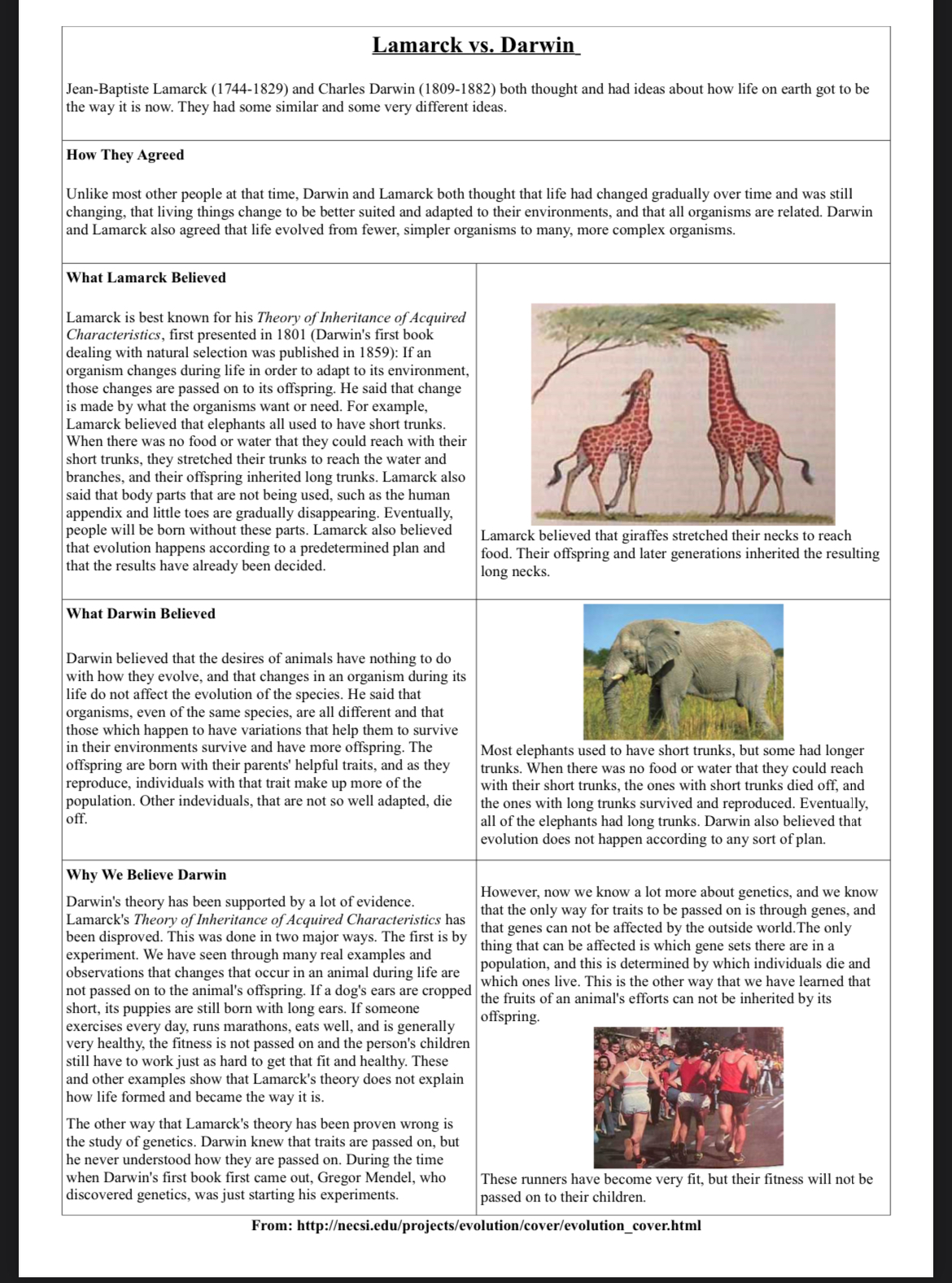Theories of Evolution
1/7
There's no tags or description
Looks like no tags are added yet.
Name | Mastery | Learn | Test | Matching | Spaced |
|---|
No study sessions yet.
8 Terms
Gradualism
It was developed by Darwin and states that organisms descent from a common ancestor gradually over a long period of time in a linear branching fashion big changes a cure by accumulation of many small ones according to this theory fossils should exist as evidence of every stage of evolution of every species with no missing links which of course is not available that’s why Darwin himself disproved it later and suggested a new theory.
Punctuated Equilibrium
it was a favored theory one day and was developed by Stephen J, Gould and Niles Eldridge. This theory proposes that new species appear suddenly after long periods of no change most likely a new species arises in a different place and expand its range competing with and replacing the ancestral species that becomes extinct proving this theory is a big challenge.
Spontaneous generation
It is the theory that living things are emerge from nonliving things of course it is a nonsense theory that was disproved by Francisco Redi and Louis Pasteur in 17th century

Lamarckian Theory
Relies on the idea of inheritance of acquired characteristics and use and diuse
States that the individual organisms change in response to their environment and this change is then passed to next generations
example the giraffe developed a long neck because it’s eight leaves of the tall acacia tree for nourishment so they had to stretch to reach them so their neck got elongated and this acquired trait of elongated neck is passed onto their offspring
This theory was disproved because acquired traits can’t be inherited to offspring as acquired traits are characteristic changes not genetic changes
This theory was accepted in the early 19th century, although that it is so funny

Darwin’s Theory of Natural Selection
Published in “ on the origin of species” in 1859
Darwin published this theory after reading Malthus theories on population growth, disease, and famine in 1789
Says that populations tend to grow exponentially until the overpopulate and exceeded their resources
Overpopulation results in competition and struggle for existence
In any population, the ability of individuals to survive and reproduce varies (however could explain this variation because genetics was not understood then and even Mendel’s theory of genetics wasn’t explained at that time also Hugo De Varies of mutation “ another source of variation” wasn’t also explained at that time this is the weakest part of Darwin’s theory
Only the best fit individual survive and get to pass on their traits to offspring (known as survival of the fittest) and the degree of fitness is measured by the ability of an individual to survive and reproduce in its environment
Evolution occurs as advantages traits accumulate in a population
Giraffe’s long neck example
According to Darwin’s theory; ancestral giraffes were short necked, although that the neck, length varied between individuals
As the population increased; the competition for the limited food supply increased as well so only taller individuals had a better chance to survive
Overtime; the proportion of giraffes with long necks increased in the population until only longneck giraffes existed
Note that no individuals neck grew longer, but the average length of neck in the population changed
Change of color of peppered moths example
Until 1845 in England, most peppered moths were light in color and only a few black ones were found
With increasing industrialization and suit, polluted the environment, and made all the rocks and plants black (darkening due to industrialization is referred to as “industrial Melanism”)
So by 1950 moths in industrialized regions were black with a few light ones only
Before the interstation white moths were camouflaged in their environment, and dark ones were easy prey to their predators (birds) while after the industrial revolution due to the war outbreak, so they don’t rely on agriculture anymore, because it all burnt down and went destroyed select advantage) and the white ones became easy prey
Within 100 years, dark moths replaced white moths in the population
Note that no single individual changed, but the frequency of allele (for color) in the population changed
Drug resistance example
One of the rare examples of natural selection happening rapidly
After discovery of antibiotics, bacteria strains appeared that were resistance to those antibiotics
The appearance of antibiotics did not induce mutation for resistance. It just killed the susceptible and weak bacteria.
Since only resistant individual survive to reproduce, the next generation will all be resistance to the antibiotic they were exposed to
Population of bacteria can become resistant to certain antibiotic within months
Note that individual bacteria did not evolve. Only the population did.